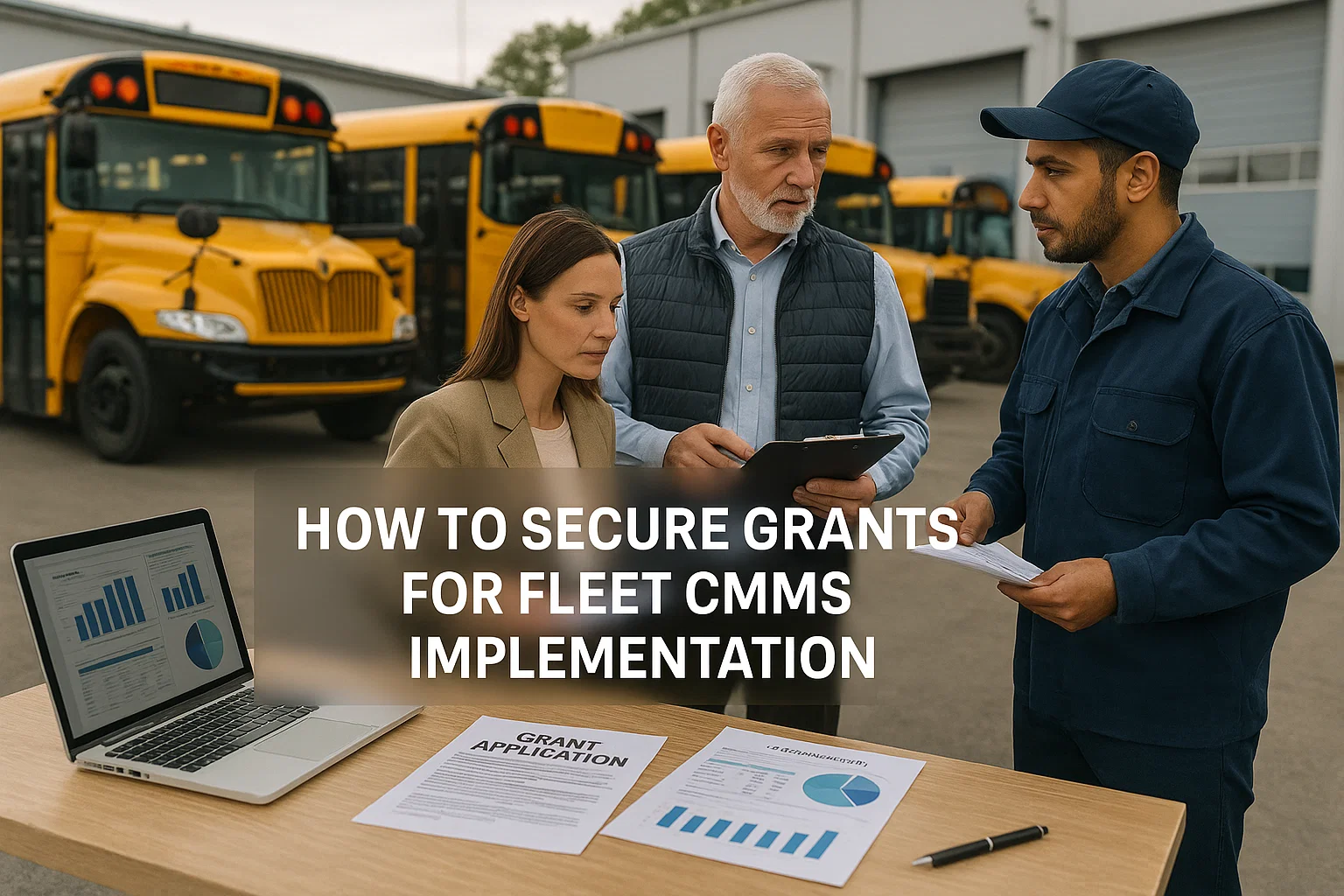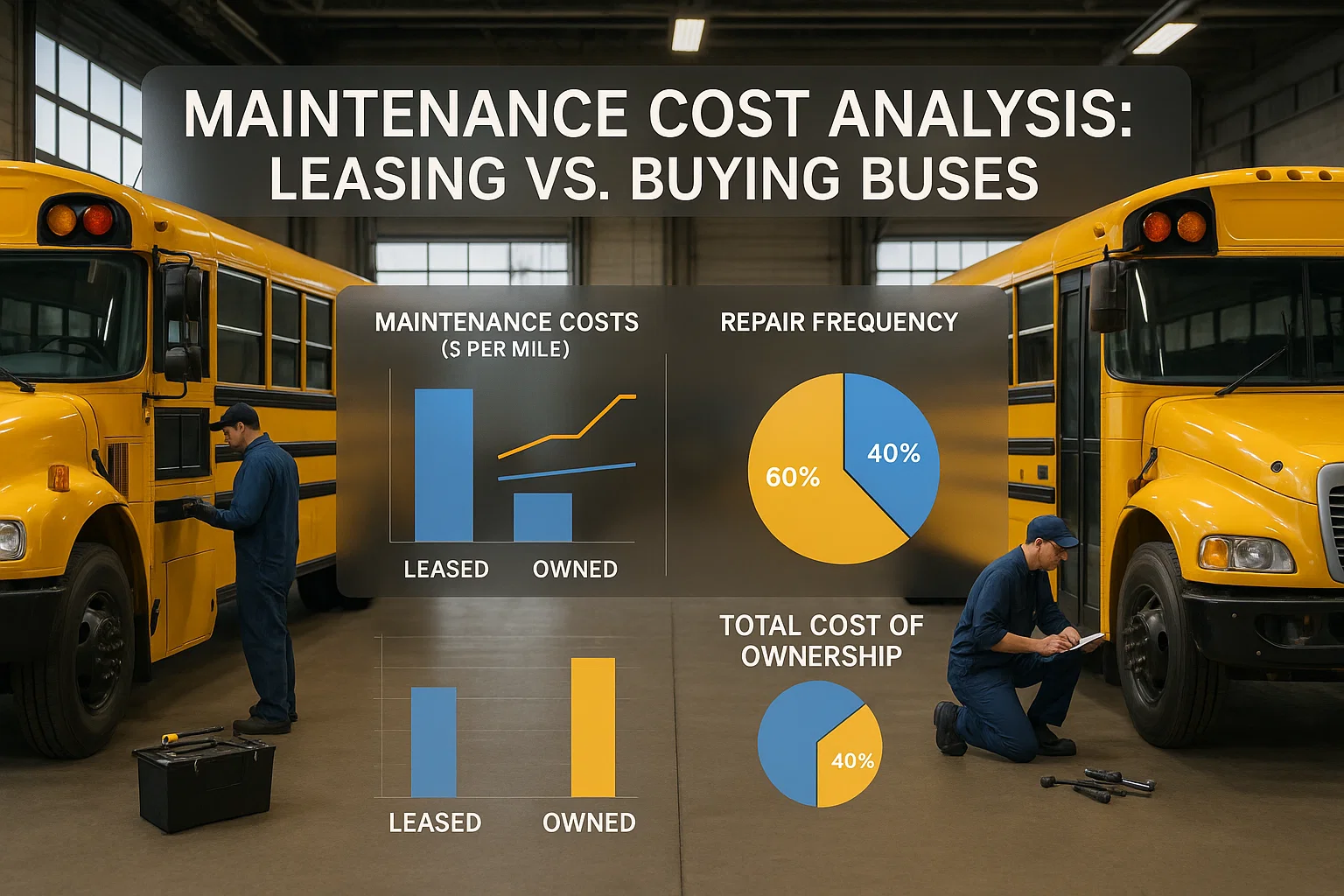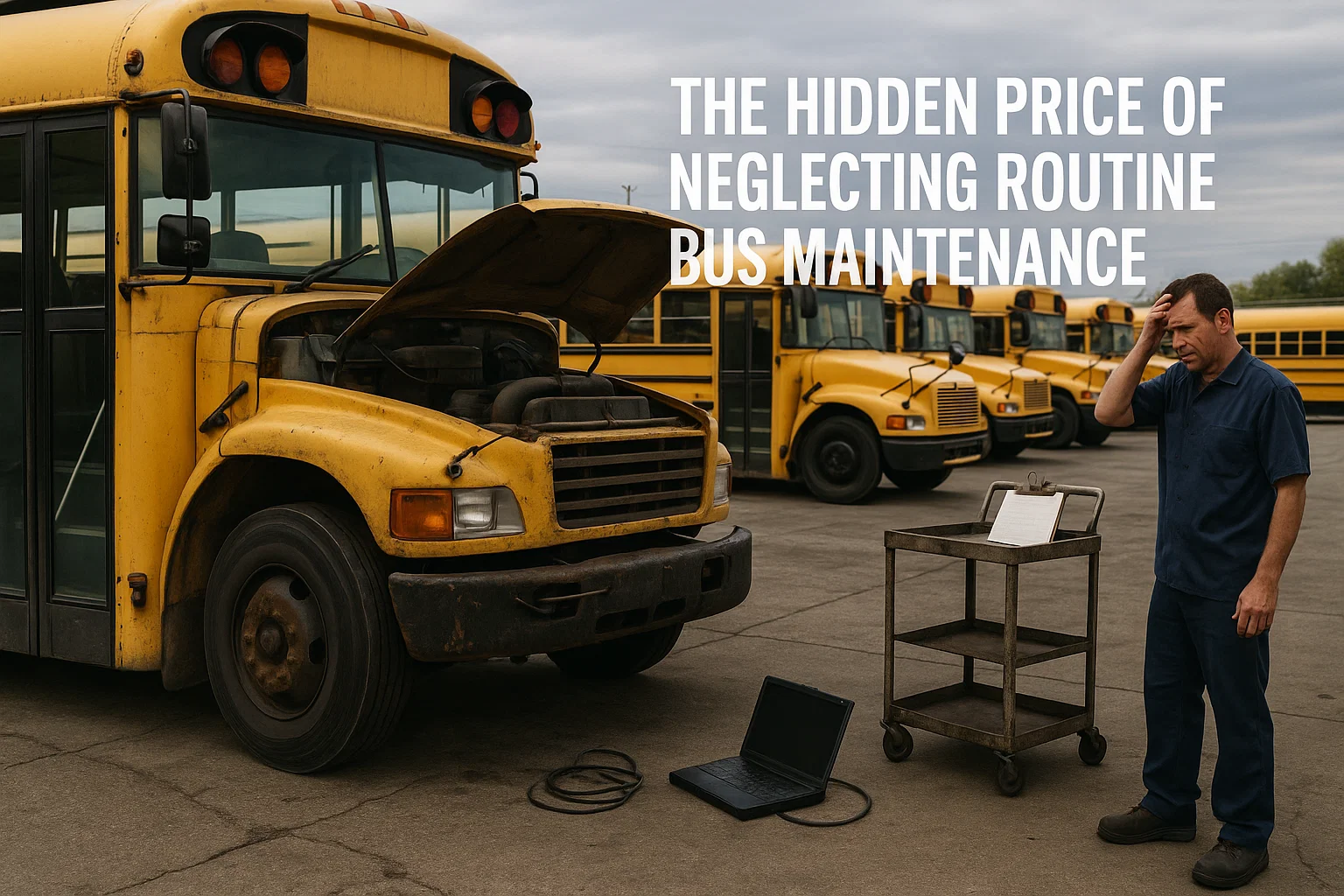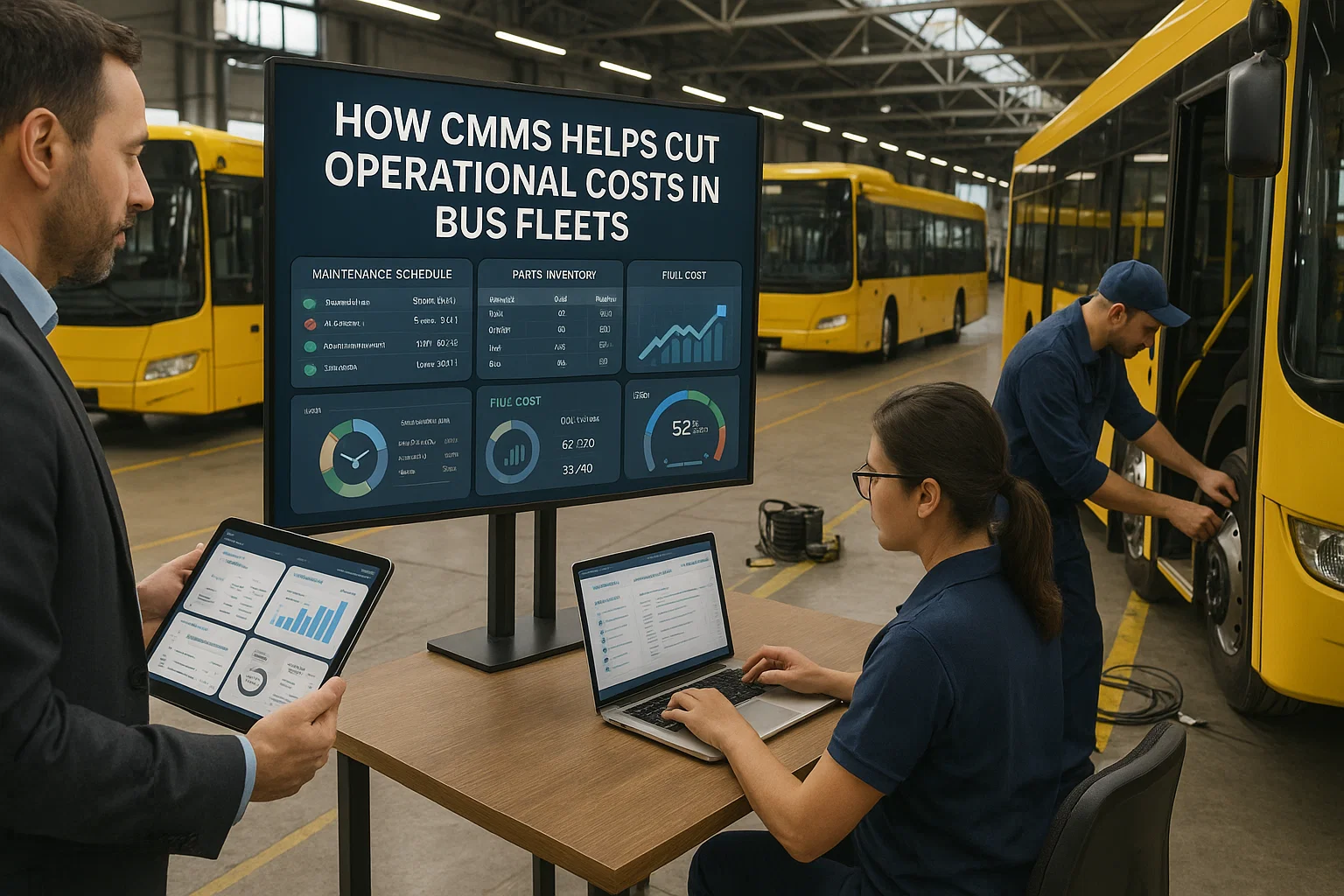DOT inspections represent one of the most critical compliance requirements for commercial bus operations in the United States. These comprehensive safety evaluations can make or break fleet operations, with violations leading to substantial fines, vehicle downtime and potential safety incidents that damage both reputation and bottom line.
Modern bus fleets face increasingly stringent inspection standards that cover everything from basic safety equipment to complex electronic systems. The Federal Motor Carrier Safety Administration (FMCSA) conducts over 3.5 million roadside inspections annually, with commercial buses subject to some of the most rigorous scrutiny in the transportation industry.
Successful DOT inspection preparation requires systematic approach combining preventive maintenance, driver training, and comprehensive documentation. Fleet operators utilizing Bus CMMS platforms report 40% fewer violations and 60% faster inspection completion times compared to manual tracking systems.
Understanding DOT Inspection Levels
Critical Inspection Types to Prepare For
- Level I - North American Standard Inspection: Most comprehensive 37-step inspection covering driver qualifications, hours of service, vehicle condition, and cargo securement
- Level II - Walk-Around Driver/Vehicle Inspection: Examination of driver credentials and vehicle exterior components without going under the vehicle
- Level III - Driver-Only Inspection: Focus on driver qualifications, medical certificates, hours of service records, and alcohol/drug testing
- Level VI - Enhanced NAS Inspection: Specialized inspection for passenger-carrying vehicles with additional safety requirements
Each inspection level requires specific preparation strategies and documentation. Bus CMMS systems provide automated compliance tracking that ensures all required documentation is current and accessible during inspections, reducing the risk of violations due to administrative oversights.
Pre-Inspection Preparation Strategy
Effective DOT inspection preparation begins long before the inspector arrives. A systematic approach using Bus CMMS platforms ensures every critical component meets or exceeds federal safety standards through comprehensive preventive maintenance programs.
Essential Documentation Requirements
DOT inspections require immediate access to multiple documentation categories. Driver qualification files must include medical certificates, driving records, training certifications, and drug/alcohol testing records. Vehicle documentation encompasses registration, insurance certificates, inspection reports, and maintenance records.
Modern Bus CMMS systems digitize all required documentation, providing instant access through mobile devices during roadside inspections. This digital approach eliminates delays caused by missing paperwork and demonstrates proactive compliance management to inspectors.
Critical Vehicle Components Inspection Checklist
DOT inspectors follow standardized procedures examining specific vehicle systems known to impact safety. Understanding these focus areas enables targeted maintenance strategies that prevent violations before they occur.
Primary Inspection Categories
Brake Systems
Brake adjustment, pad thickness, air system leaks, and emergency brake functionality represent the most common violation categories
Steering and Suspension
Steering component wear, suspension integrity, and wheel alignment affect vehicle control and passenger safety
Tires and Wheels
Tread depth, sidewall condition, proper inflation, and wheel fastener torque specifications
Lighting and Electrical
All required lights, reflectors, and electrical connections must function properly and meet visibility standards
Driver Qualification and Hours of Service Compliance
Driver-related violations account for approximately 30% of all DOT inspection failures. Comprehensive driver management through Bus CMMS platforms ensures continuous compliance monitoring and automated alerts for expiring certifications.
Driver Compliance Requirements
- Medical Certification: Current DOT medical certificate appropriate for vehicle class and passenger capacity
- Commercial Driver's License: Valid CDL with proper endorsements and clean driving record
- Hours of Service Records: Accurate logbooks or ELD data demonstrating compliance with duty time regulations
- Drug and Alcohol Testing: Current participation in DOT-required testing programs with documented results
Common Violation Categories and Prevention
High-Risk Violation Areas
- Brake System Defects: Brake adjustment issues account for 15% of all violations - implement monthly brake inspections
- Lighting Deficiencies: Non-functional lights create immediate safety hazards - conduct daily pre-trip lighting checks
- Hours of Service Violations: Logbook errors and duty time violations - utilize electronic logging devices and driver training
- Medical Certificate Issues: Expired or missing medical certificates - implement automated tracking through CMMS systems
Proactive violation prevention through Bus CMMS monitoring reduces inspection anxiety and demonstrates commitment to safety excellence. Automated compliance tracking identifies potential issues weeks before inspections occur.
Technology Integration for Inspection Success
Modern DOT inspection preparation leverages technology integration to streamline compliance management and improve inspection outcomes. Bus CMMS platforms provide comprehensive inspection preparation tools that transform compliance from reactive to proactive.
Digital Compliance Management
Electronic logging devices (ELDs) integrate with CMMS platforms to provide real-time hours of service monitoring and automatic violation prevention. Digital vehicle inspection reports (DVIRs) create immediate documentation of daily safety checks, providing inspectors with comprehensive maintenance history.
Mobile CMMS applications enable real-time documentation during inspections, allowing immediate access to maintenance records, driver qualifications, and compliance certificates. This technology integration demonstrates professional fleet management and often results in more favorable inspection outcomes.
Inspection Day Best Practices
Successful DOT inspections require careful preparation and professional presentation. Driver training and systematic preparation protocols significantly impact inspection duration and outcomes.
Inspector Interaction Guidelines
Professional Presentation
Courteous, cooperative behavior with immediate document provision and vehicle access
Documentation Organization
Logical organization of required documents with Bus CMMS mobile access for instant retrieval
Vehicle Preparation
Clean, well-maintained vehicle appearance with all required equipment properly stowed and accessible
Post-Inspection Violation Management
Effective violation management minimizes operational disruption and prevents recurring issues. Bus CMMS platforms provide violation tracking and corrective action management that ensures timely resolution and compliance restoration.
Violation Response Protocol
Immediate corrective action prevents vehicle out-of-service status and reduces fine exposure. Document all repairs with detailed maintenance records and photographic evidence. Schedule follow-up inspections to verify compliance restoration and prevent future violations.
Trend analysis through CMMS data identifies recurring violation patterns and enables targeted prevention strategies. Fleet operators utilizing comprehensive violation tracking report 50% reduction in repeat violations within 12 months of implementation.
Regulatory Updates and Compliance Monitoring
Staying Current with DOT Regulations
- Regular Training Updates: Quarterly driver and maintenance staff training on current DOT regulations and inspection procedures
- FMCSA Monitoring: Subscription to federal register updates and industry compliance bulletins through Bus CMMS integration
- Industry Participation: Active participation in transportation associations and safety councils for regulatory insight
- Compliance Auditing: Regular internal audits using DOT inspection criteria to identify improvement opportunities
ROI of Proactive DOT Compliance
Comprehensive DOT inspection preparation through Bus CMMS systems delivers measurable returns through reduced violations, shorter inspection times, and improved safety ratings. Industry data demonstrates average violation reduction of 45% within the first year of systematic compliance management implementation.
Financial Impact Analysis
Violation prevention saves thousands in fines, reduces vehicle downtime, and maintains favorable insurance rates. Enhanced safety ratings improve customer confidence and often qualify fleets for preferential contracts. The average payback period for comprehensive compliance management systems is 8-12 months.
Conclusion
Mastering DOT inspections requires systematic preparation, comprehensive documentation, and proactive compliance management. The integration of modern Bus CMMS platforms with proven inspection strategies creates a foundation for consistent compliance success and operational excellence.
Success in DOT compliance extends beyond avoiding violations to building a culture of safety excellence that protects passengers, drivers, and business operations. Fleet operators who embrace comprehensive compliance management position themselves for sustainable growth and competitive advantage in an increasingly regulated transportation environment.
Ready to Transform Your DOT Compliance Strategy?
Discover how Bus CMMS can streamline your inspection preparation and ensure consistent DOT compliance success for your fleet operations.








